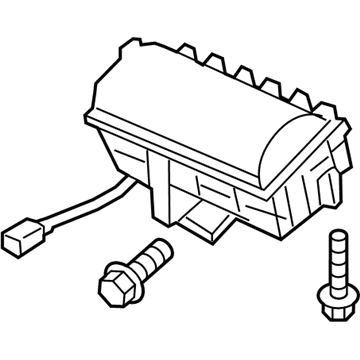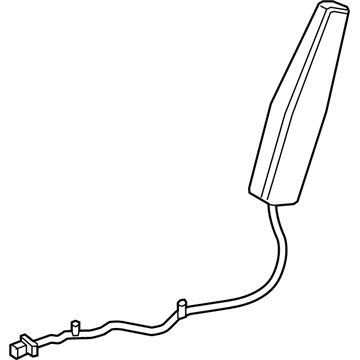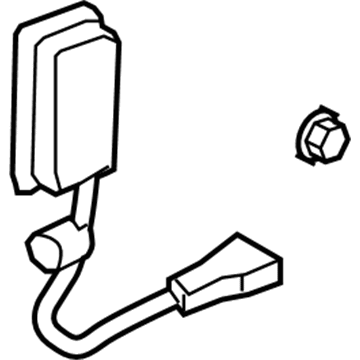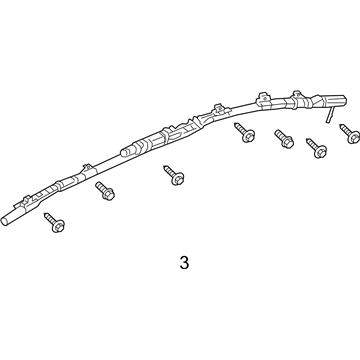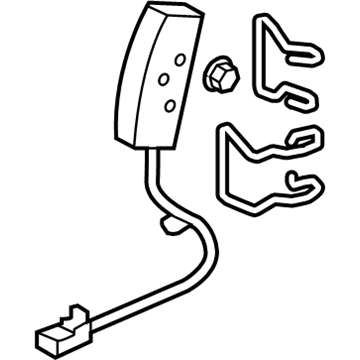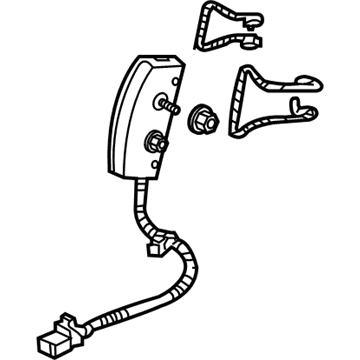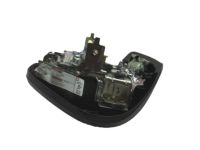×
- Live Chat
- 1-888-984-2011

My Garage
My Account
Cart
Genuine Honda Fit Air Bag
Air Bag Module- Select Vehicle by Model
- Select Vehicle by VIN
Select Vehicle by Model
orMake
Model
Year
Select Vehicle by VIN
For the most accurate results, select vehicle by your VIN (Vehicle Identification Number).
32 Air Bags found
Honda Fit Module, Driver (Deep Black)
Part Number: 77810-T7S-A80ZA$1373.41 MSRP: $1981.83You Save: $608.42 (31%)Honda Fit Module, Driver (Graphite Black)
Part Number: 77810-TK6-A20ZA$1266.62 MSRP: $1827.73You Save: $561.11 (31%)Honda Fit Module Assembly, Driver (Deep Black)
Part Number: 77810-T5R-A81ZA$1442.65 MSRP: $2081.75You Save: $639.10 (31%)Honda Fit Module Assembly, Driver (Graphite Black)
Part Number: 77810-SLN-A81ZA$1151.21 MSRP: $1661.20You Save: $509.99 (31%)Honda Fit Module Assembly, Passenger
Part Number: 77820-T5R-A80$818.36 MSRP: $1217.80You Save: $399.44 (33%)Honda Fit Module Assembly, Driver Side
Part Number: 78055-T5R-A01$588.50 MSRP: $849.20You Save: $260.70 (31%)Honda Fit Module Assembly, Passenger Side
Part Number: 78050-T5R-A01$588.50 MSRP: $849.20You Save: $260.70 (31%)Honda Fit Module Assembly, Passenger Side (Graphite Black)
Part Number: 78050-SLN-A81ZA$489.95 MSRP: $707.00You Save: $217.05 (31%)Honda Fit Module Assembly, Passenger Side (Titanium)
Part Number: 78050-SLN-A81ZB$489.95 MSRP: $707.00You Save: $217.05 (31%)Honda Fit Set, Module Assembly L
Part Number: 78875-T5R-A91$781.81 MSRP: $1128.15You Save: $346.34 (31%)Honda Fit Module Assembly, Driver Side
Part Number: 78055-TK6-A00$490.08 MSRP: $707.18You Save: $217.10 (31%)Honda Fit Module, Passenger Side Si Curt Ab
Part Number: 78870-TK6-A81$906.71 MSRP: $1308.38You Save: $401.67 (31%)Honda Fit Module Assembly, Passenger Side Curtain Airbag
Part Number: 78870-SLN-A81$924.31 MSRP: $1333.78You Save: $409.47 (31%)Honda Fit Module Assembly, Passenger Side
Part Number: 78050-TK6-A01$480.62 MSRP: $693.53You Save: $212.91 (31%)Honda Fit Module Assembly, Driver Side
Part Number: 78055-TK6-A01$480.75 MSRP: $693.72You Save: $212.97 (31%)Honda Fit Module Assembly, Passenger Side
Part Number: 78050-TK6-A00$489.95 MSRP: $707.00You Save: $217.05 (31%)Honda Fit Module Assembly, Driver Side (Graphite Black)
Part Number: 78055-SLN-A81ZA$489.95 MSRP: $707.00You Save: $217.05 (31%)Honda Fit Module Assembly, Driver Side (Titanium)
Part Number: 78055-SLN-A81ZB$489.95 MSRP: $707.00You Save: $217.05 (31%)Honda Fit Module Assembly, Passenger Side Curtain Airbag
Part Number: 78870-T5R-C00$617.58 MSRP: $891.17You Save: $273.59 (31%)Honda Fit Module Assembly, Passenger Side Curtain Airbag
Part Number: 78870-T5R-A01$618.56 MSRP: $892.58You Save: $274.02 (31%)
| Page 1 of 2 |Next >
1-20 of 32 Results
Honda Fit Air Bag
In search of affordable OEM Honda Fit Air Bag? Consider browsing through our extensive inventory of genuine Honda Fit Air Bag. Not only do we provide market-leading prices and a manufacturer's warranty, but we also pride ourselves on exceptional customer service and swift delivery.
Honda Fit Air Bag Parts Questions & Experts Answers
- Q: What features and functions do the Supplemental Restraint System (SRS) and airbag modules provide for safety on Honda Fit?A: These models have a Supplemental Restraint System (SRS) which is known as air bags intended to safeguard the driver and the passenger from severe injuries during a frontal impact; some of the models in this category also have side impact air bags in the front seats as well as along the roof rail. Both models feature a diagnostic control unit mounted on the under dash area near the center console. The airbag modules comprise an airbag together with the inflator unit; the inflator assembly is fixed on the back of the dwelling of the airbag and upon the receipt of an electrical signal, they blow the bag almost immediately. This signal is transmitted by a spiral cable, which is a flat, ribbon-like electrically conductive tape, in respect of the position of the steering wheel. Airbag control units are fitted in the steering wheel hub, in the upper part of the dashboard on the passenger side, and in some models, in the front and rear seat backs and along the roof rail. The integrated diagnosis/sensor unit situated in the car's dashboard and accompanies an on- board micro-computer and crash sensor assesses the operation of the system every time the car is switched on and if all is well, it switches on the "AIRBAG" light for a few seconds. If there is a fault, there is continuous illumination of the lamp to show that the unit needs service. The crash zone sensor is situated on the radiator support; side airbag sensors-in the "B" pillar of the doors. For deployment, the impact sensors must 'switch on,' thereby completing the circuit to the airbag inflator. A self-diagnosis circuit lights up an instrument panel light when the ignition is turned on, which should go off after about five seconds if all is well; any failure requires that the circuit be inspected. While operating in the vicinity of SRS components the system has to be made inoperative; turn the steering wheel straight-ahead, switch the ignition to the LOCK position, remove the battery cables from the terminals and touch the metal part of the connexion with bare hands to discharge static electricity. After the servicing, one has to reconnect the connectors to restore the airbag system, check whether there is anybody in the vehicle and follow other few necessary steps to ensure the airbag warning lamp operates properly. The elements to be removed include the driver's side airbag and a part of the spiral cable which can be removed when the steering wheel has been pulled out, and the passenger's airbag module to be removed only when the component such as an instrument panel has been pulled out. Also, all the models include pyrotechnic units in the front seat belt retractors which tightens the belts upon an impact and contributes for the safety of the driver as well as the front seat passenger. Air bag system should be turned off whenever there is work being done on or regarding the seats.








